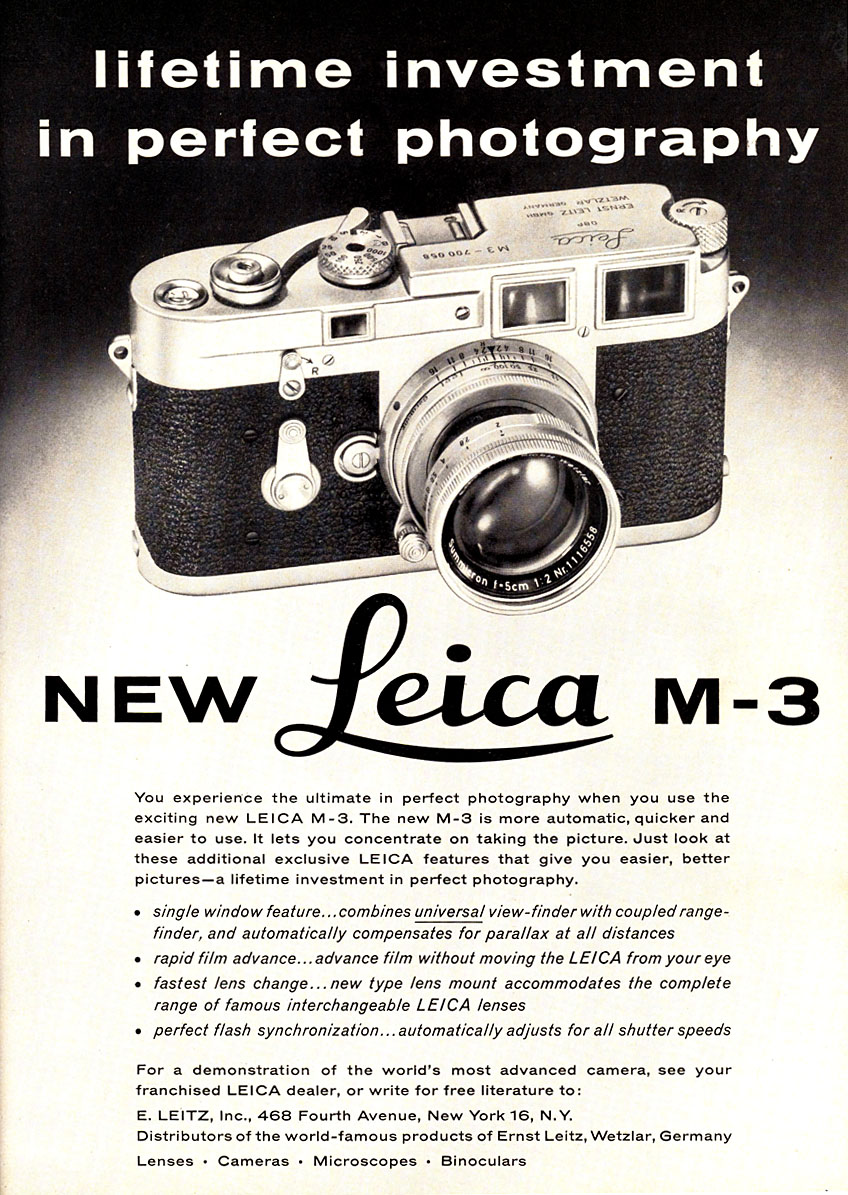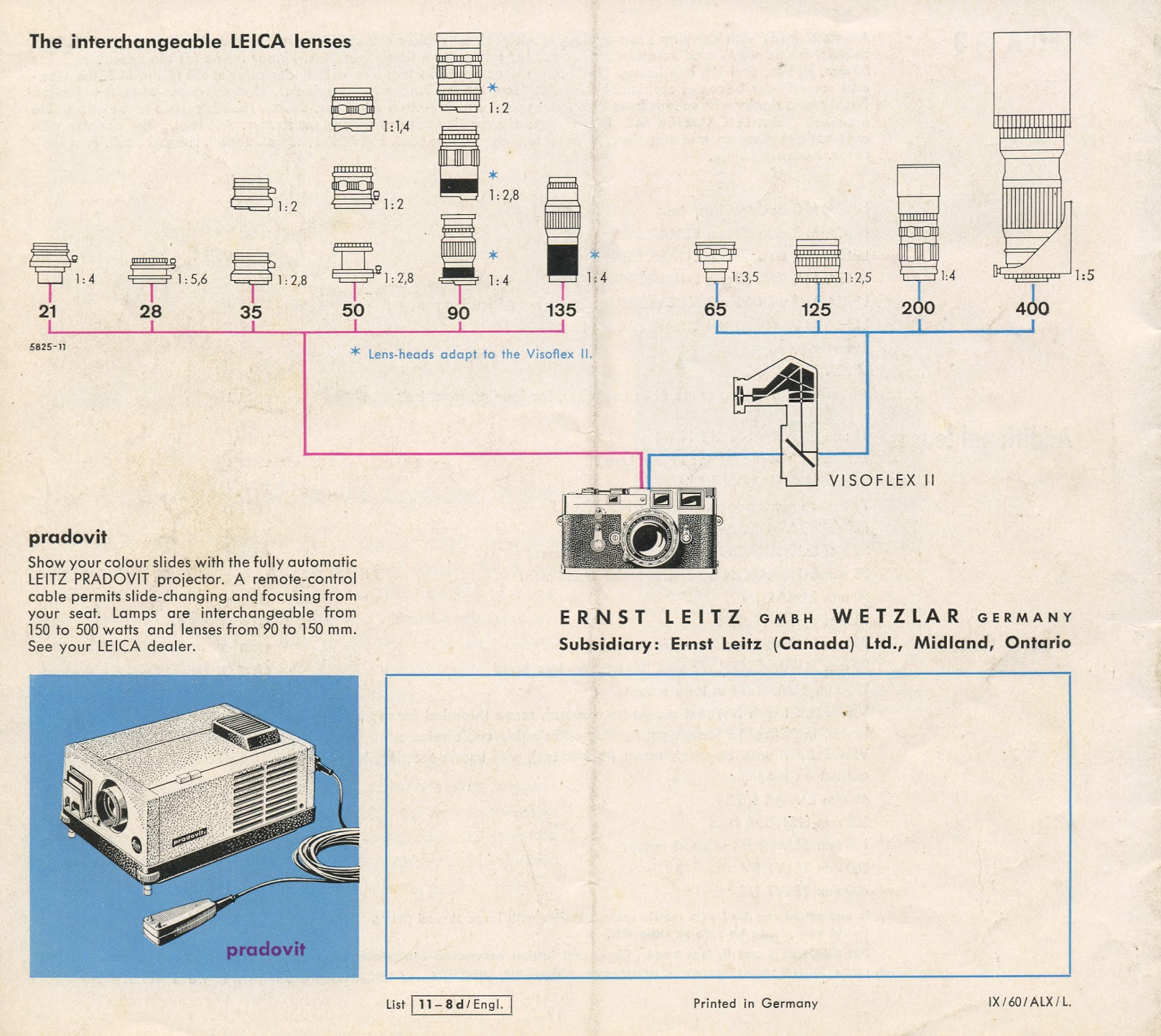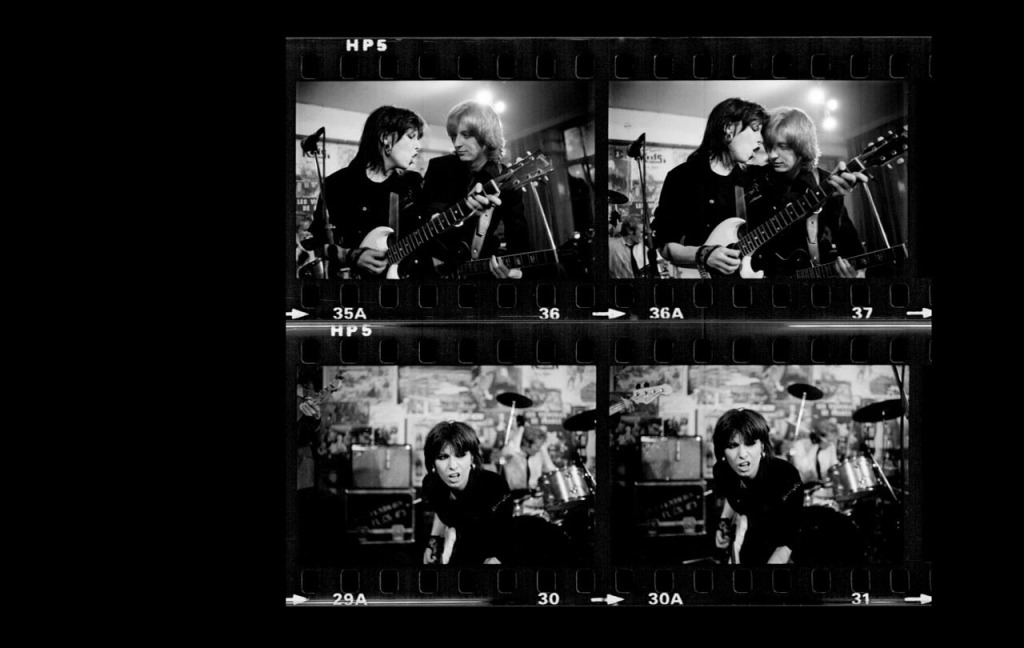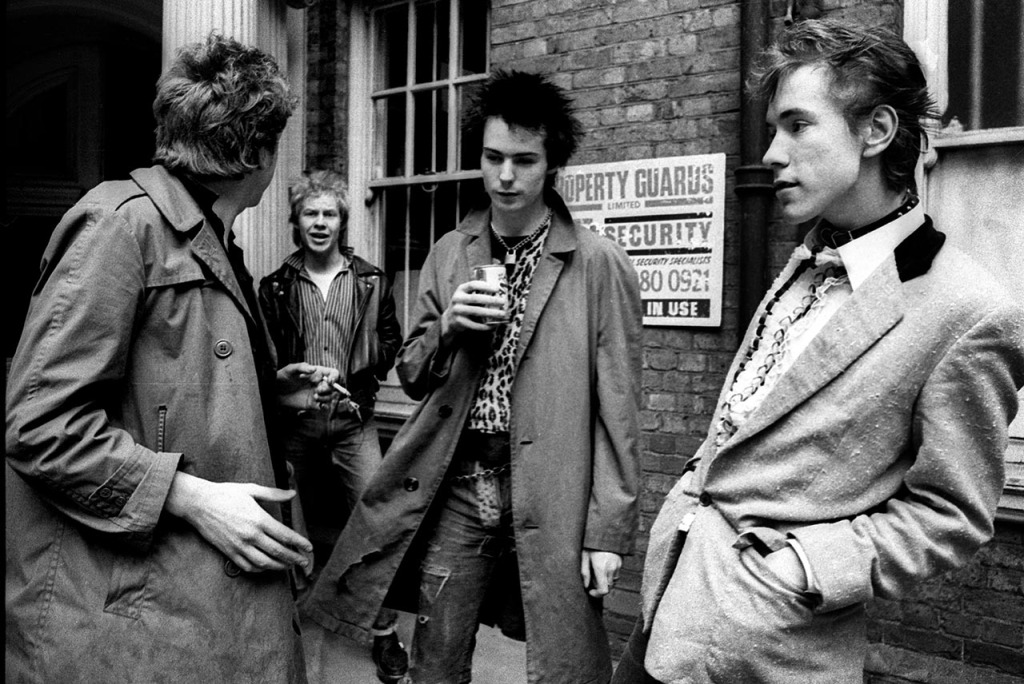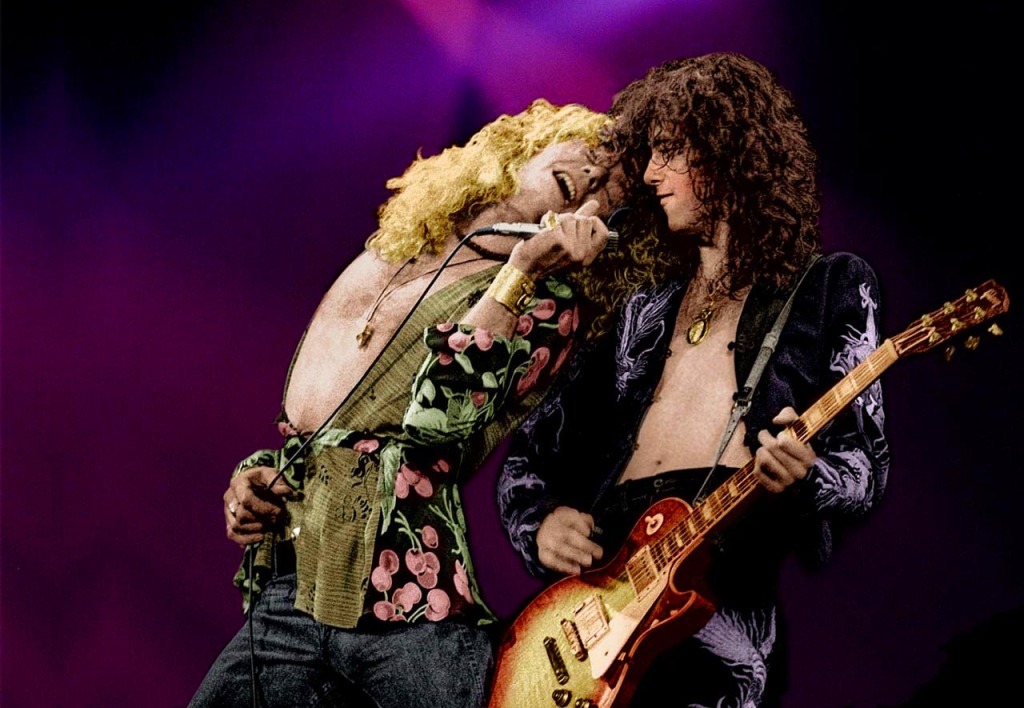An interesting conversation with Mike Avina, Chris Farling, David Horton, Hector Isaac and Tom Young from www.observecollective.com. Some are photographers who have “graduated” from film to digital but still understand the enduring strengths of film capture, others having taken up photography in the digital era. A very germain conversation for those of us who use Leica rangefinders, whether film or digital.
A recent magazine ad for the Fujifilm X-T1 said, “The camera you carry is as important as the images you make.” But among street photographers, it is not cool to obsessively discuss “gear.” We take that for granted – cameras are just tools. While that is true, there is no better tonic for “photographers’ block” than a new camera or lens. Some photographers have truly found their vision when they switched to a certain camera. Back in the pre-digital days you had a camera. It was either a Leica, or an SLR. And you kept it forever. Today with so many choices of equipment, a photographer can pretty much find the perfect camera to suit their shooting style and personality. Or is it the other way around? In this post we hope to discover how the equipment a street photographer uses influences what their pictures look like.
OBSERVE
Chris, you were shooting with an Olympus E-P1. Your work was solid and gaining some notice. Then you bought an OM-D E-M5 in the spring of 2012 and it seems like your vision really blossomed. I immediately noticed the quality of your work ramp up several notches and that trend continues. Do you feel that you held a vision that the OM-D finally released? Or did the new equipment present possibilities the E-P1 didn’t… i.e., eye-level viewing, fast autofocus, etc.
Chris Farling (CF)
I don’t want to diss the E-P1 overmuch in that the E-P1 itself was a quantum leap over the fully automatic mode-style shooting of the digital point-and-shoots that I had owned over the previous decade. When I committed to ponying up the $$$ to buy the E-P1, I made a parallel commitment to being more serious in my study and practice of photography. It was with the E-P1 that I really dug into controlling aperture and shutter speed and exploring different focal lengths and lenses. I’m actually glad I started with a camera that had some clear limitations (no VF, iffy sensor, slow AF, & poor high-ISO), much the way you need to play the $&@! out of a student horn before moving onto a more powerful but perhaps more complicated or less forgiving instrument in music. Everyone starting out wants to buy some perfect camera that will make them a brilliant photographer overnight, but the paradox is that it’s only through working around limitations that you grow and develop good habits. If you start out with everything handed to you, it can breed in you a certain laziness and you’ll most likely get bored and frustrated.
The E-P1 was also my first experience using fixed prime lenses and that more than anything helped me to “see” as a street photographer would and to be able to pre-visualize frames to some degree. It was really a wonderful camera to experiment with and learn on and I don’t think I will ever sell it.
OBSERVE
So you’re saying that a more basic camera can provide a better learning experience?
CF
Exactly. It really did liberate me when I upgraded to the E-M5 along with the Oly 12mm f2 lens because I had much of the basics in place from the E-P1. Most of the gains weren’t surprising in that I knew what I wanted out of this new camera and what advantages it held over the old one. I honestly can’t imagine needing a more powerful camera in the foreseeable future.
OBSERVE
That was a pretty wide lens to start with! Just what are those advantages the E-M5 gives you?
CF
The one thing that I want from a camera more than anything else is versatility. And I include the lightweight form factor of the m4/3 system as a key part of that versatility. Not for me the heavy necklace of an SLR… I like to be able to shoot quickly and reflexively and so I don’t even want the camera to be on a strap. The E-M5’s EVF was a real boon to helping me execute better edge-to-edge compositions. I for one really like having all the settings info available in the EVF, though I know many prefer optical ones. The touchscreen, which allows you to tap a focal point or even to release the shutter directly, added even more flexibility. The almost instantaneous AF (as well as the simple zone focusing capability of the 12mm lens’s pull ring) meant that I could depend on my own sense of timing and reflexes and not worry that the camera wouldn’t respond when I was ready. The E-M5 helped me to learn more about on- and off-camera flash. Perhaps the most useful thing, surprisingly enough, was simply the extra customizable dial and button, allowing me to have immediate tactile access to virtually any setting I would want to change quickly in anticipation of the next shot. Also, it bears mentioning that the rich Olympus JPG quality from both cameras has influenced my color sensibility.
As much as I like the E-M5 and feel that it has helped me develop and execute my vision, I’ve since adopted the APS-C sensor Ricoh GR as my principal camera, reserving the E-M5 for special situations where I want the different lenses or the weatherproofing. In many ways, the Ricoh is a step backwards in quality and features, yet it is so perfectly portable and well-designed in its flexibility (a real photographer’s camera) that those advantages trump all other considerations. Plus there’s that awesome TAv mode that let’s you specify both aperture AND shutter speed… I find the Ricoh is the perfect camera for my style of quick close-in shooting with a fixed 28mm-equiv. and I suffer little when adapting it to other types of shooting.
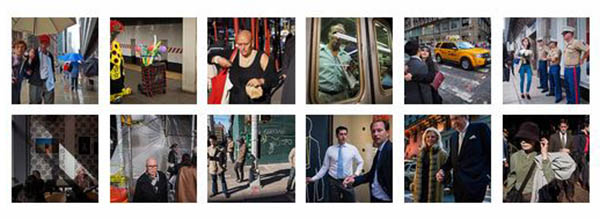
OBSERVE
So with the E-M5 you became accustomed to the convenience of customizable dials? That would make the GR a logical move because, since the line’s inception, it has been praised for its flexible interface. As DP Review said, “We’ve often referred to the Ricoh interface as arguably the best enthusiast-focused interface on a compact camera.”
David, you followed a similar path as Chris, moving from an E-P2 up to the OM-D E-M5. Among this group of photographers, you used the focal length closest to what is considered a “normal” lens: 20mm (40mm equivalent). There is less margin for framing errors than with a 28mm or even 35mm. As a graphic designer, tell us how the precise eye-level framing of the OM-D has influenced your photography, especially with the 20mm lens.
David Horton (DH)
When I first started dabbling in SP, I was using a Canon G9 which has a 35mm default lens. I liked that length a lot. When I moved to the E-P2, I opted for the Panasonic 20mm (40mm equiv.) because it was considerably faster than the 17mm Oly lens* (34mm equiv.) and it received considerably better ratings and reviews.
OBSERVE
*You mean the Olympus 17mm f2.8 Pancake, correct?
DH
Yes. Oly’s first 17mm prime did not have very good performance especially in the corners. Although I used the Pany 20mm almost exclusively for over a year (and was very pleased with the IQ of the lens), I often found the focal length limiting. I wished it was a little wider.
The primary reason I moved to the EM-5 was speed. Although I adapted to the slow autofocus of the E-P2, I was missing more and more shots. Although the add-on EVF on the E-P2 was acceptable, it was a bit cumbersome. I shoot exclusively through a viewfinder. So the ergonomic design of the built-in viewfinder on the EM5 was also very appealing. What I didn’t know until I received the camera is that, to benefit from the increased speed of the EM-5, you also had to have one of the newer Oly lenses. At the time I bought I camera, the fast Oly lenses only existed in 12mm and 45mm lenses. The 12mm (24mm equiv.) was too wide for me. I waited for at least three months for the rumored 17mm 1.8 lens to come out. (It was my dream lens.) I preordered it and got it as soon as it released. I’ve used it exclusively since the day I got it. The combination of the EM-5 and that lens is extremely fast.
The other thing I like about the EM-5 as opposed to something like the Fuji X100 (which I also considered) is the ability to change lenses. Although I rarely do, it’s nice to have that option. I always carry the 45mm 1.8 Oly lens (90m equiv.) with me too, just in case.
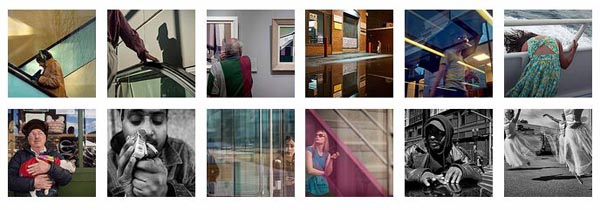
OBSERVE
It is nice to have the ability to change lenses, particularly when on a trip, even if you don’t do it often.
Mike, you have used quite a variety of equipment, from Leica M3 to Sony RX1 and many things in between including compact P&S’s and the Ricoh GR. I know that you are a dedicated student of photography with a deep curiosity about what is possible. Does this explain your variety of equipment? You seem to always come back to shooting b&w and I have the impression that, ideally, film is your medium of choice and because of that much of your digital work looks like film.
Mike Aviña (MA)
I’d like to challenge the conventional wisdom of sticking to one camera and one lens. There is a time and a place for sticking to a narrow set of gear. When you get completely accustomed to one focal length and one camera the gear does become more intuitive, you can set up shots and frame them before you pull the camera up to your face because you know where to stand at what distance to include given elements. That said, smaller cameras have certain advantages: deep depth of field, very fast autofocus, and tilt-screens. There are world-class photographers that have discovered and exploited these advantages. I just purchased a published book shot entirely by phone–the images are superlative. I’ve made 12” by 16” prints from an LX7–they look great.
To answer your first question–yes, I prefer film. The dynamic range of film and the separation of subjects one can achieve with shallow depth of field on a fast lens is a necessary creative tool. I have never used complicated post-processing to add blur to digital images; this is a method that ends up looking artificial. A wide, fast lens on either a full-frame sensor or over film is therefore a must-have. Shallow depth of field however is only one tool and not one I use all or even most of the time.
OBSERVE
Arguably, you can come pretty close having a digital image file look like it was shot with film in post processing. But the methodology of shooting film is a whole ‘nother animal.
MA
Film versus digital is probably better left for another discussion! I also have an abiding love for small, pocketable, point-and-shoot cameras. As others have mentioned above, small cameras are easier to haul all day. In addition, shooting like a tourist, with innocuous little shots framed through the LCD rather than a viewfinder, is often more effective than pulling a big rig up to your face and clacking away. Even with a small rangefinder, people react more when you pull a camera up to your face than they do to an apparent tourist snapping casually with the LCD. I tend to frame faces off center; when using a wide angle lens this means people are often not sure they are in the shot because it isn’t clear you are shooting at them. The shooter and the subject have a complicit agreement to the fiction–the photographer is shooting something else; the subject ignores the shooter as long as it isn’t too intrusive. This helps one work close in crowded spaces. Having a bundle of different tools allows flexibility and simultaneous exploration of different creative options.
OBSERVE
You make a very good point Mike. Why shouldn’t we use whatever tool best suits the situation? Some of our peers carry dslr’s with a zoom lens mounted that will cover most scenes. Maybe one of them will comment to the pros and cons of a zoom.
Interesting path you have followed Chris… from LCD framing, to eye-level framing, back to LCD framing. I found myself “borrowing” the small Samsung EX2F I bought for my wife and became addicted to the tilt screen. I find that I am very comfortable shooting from waist level and I really prefer the perspective of that PoV, rather than “looking down” at everything from my 6’2″ eye level.
How hard was it to adjust back to the loose framing of the GR’s LCD screen versus the precise eye-level framing of the E-M5? The concrete canyons of NY offer some shade to better see the screen, but how do you frame in bright sunlight when you travel? How often do you use the optical viewfinder?
CF
I do use the optical viewfinder on the GR sometimes (in a way, it’s less obtrusive and noticeable than holding the camera out from your body) but I have a tougher time seeing all four edges of the frame in the viewfinder than I do with the screen. As wide as I generally shoot, I have to kind of scroll with my eye in each direction and that’s too limiting and slow for me. I also don’t like the tunnel vision that develops where you can’t receive new information about the way the scene is changing and what’s happening on the margins with your peripheral vision. With the OVF, you also don’t see the central AF point if you’re using that to lock AF and then recompose. It may seem like a minor point, but I’m also very left-eye dominant so I have to block my whole face with the camera when using the VF, even if it was a corner-mounted one.
OBSERVE
An interesting observation I have made is how most of us frame on an LCD using both eyes, but frame through an eye level viewfinder with one eye closed. Truth be told, for street photography, framing using any device is probably best done with both eyes open, but a hard habit to get into with an eye level viewfinder. I find an optical viewfinder more conducive to shooting with both eyes open and it gives you the advantage of seeing what is going on outside of, and about to enter or leave the frame.
CF
That is an interesting point about shooting with both eyes open. That may be what I like about using the LCD of the GR. Viewing the LCD in sunlight hasn’t bothered me too much with either the E-M5 or the GRD since the screens can be made pretty bright. Most of the time your own body acts as shade and, even when it doesn’t, you can still easily see which shapes and areas of light and dark correspond to what you’re seeing with the naked eye. I think it’s actually kind of cool having a slight degree of abstraction (less detail) when considering the composition, the same way a photo thumbnail is often easier to use for judging the effectiveness of a composition in editing than the enlarged version.
It’s also interesting that you say you prefer shooting from a more mid-body angle than always looking down at everything. Being 6’2’’, I have the same issue and, while using the 12mm lens almost exclusively for a year, I became cognizant of the great care one must take in controlling the perspective distortion with a wide-angle lens. Even having backed off to the 28-mm equiv. of the Ricoh, I still think that the default orientation with such a lens should be relatively straight on and not tilted excessively.
DH
My biggest gripe with the EM-5 is you have to rely too heavily on the digital interface. I wish there were manual knobs to adjust the ISO, aperture, and shutter speed. Since I don’t use the LCD, I have it turned off. To adjust any of these settings, I either have to hold the camera to my eye and turn the knobs or turn the LCD on and adjust them. Neither option is ideal or fast enough. This is what I find so appealing about the X100 or a Leica. I also can’t wait until they design better battery life for these digital cameras. As Chris can tell you (from spending a day shooting with me), I opt to carry a number of batteries with me than worry about preserving battery life in the camera. I turn it on and leave it on. When I need to react quickly, I don’t want to have to wonder if the screen’s going to be black when I bring it to my eye.
OBSERVE
That’s what evolution has brought to cameras, David. With a basic film camera, like an M3 or Nikon F you have two settings: shutter speed and aperture… and, of course, focus (and film choice). Cramming so many features into a small digital camera leads to compromises.
Mike made a good point about not limiting ourselves to a single tool. Sometimes we tend to set unnecessary limitations for ourselves. Although we may at any given time favor a particular set of gear, I think most of us here have more than a single camera. We always have the option to change cameras if a project or different direction comes to us Having your equipment be intuitive is the most compelling reason for limiting equipment choices. When I saw you this last summer Mike, you were using the Sony RX1. The IQ is the obvious reason why this camera has a strong following. Is it your perfect camera? If not, what would be? The others can answer this as well.
MA
The M3 is, for me, more or less the perfect camera–I am just reluctant to keep spending the money on film. The chemicals also concern me. For an everyday digital shooter the Ricoh GR may be my favorite. The RX1 has laggy autofocus which hinders the advantage of the high IQ and beautiful rendering that the Zeiss lens offers.
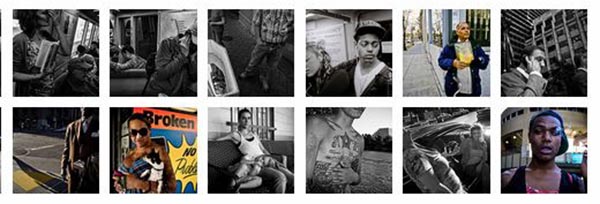
OBSERVE
David, you mention that you use an eye level viewfinder exclusively–is that because you want precise framing? How come you didn’t gravitate toward a DSLR? There are plenty of choices in size and features to fit any budget and many SP’ers use them. Was it because you already had m4/3 glass?
DH
I certainly find my framing more precise and that’s certainly one of the primary reasons I shoot this way. Perhaps, the more significant reason is that I feel “more at one” with the camera and the subject(s). I shoot a lot of portraiture and even when I’m not shooting conventional portraiture, it’s very important that I’m in sync and “connected” with my subjects. Facial expressions and details are very important to me; these are impossible for me to see if I’m relying on a screen. Shooting with a screen is fine for shapes and loose compositions but it’s not very precise—certainly not precise enough for me.
The reason I’m not interested in a DSLR is size. I don’t like to draw attention to the camera and a DSLR certainly does that. I’m also not interested in lugging one of those suckers around the city on a regular basis. I will occasionally lust after the IQ of DSLR sensors but the trade off is not worth it to me. I’ve spent the day shooting with friends that use DSLRs and after a day walking 10 miles around a city, they are not happy campers. The smaller and lighter the camera, the more likely you are to bring it with you.
OBSERVE
Tom, you use a full-frame DSLR. While the 5D is not huge by DSLR standards, it is huge in terms of what everyone else here uses. Obviously it’s hard to be inconspicuous. How do you work around that? I would assume that the quality and precise framing a DSLR offers is important to the type of pictures you want to create.
Tom Young (TY)
There’s a number of different reasons I shoot with an SLR. For one thing, I don’t only shoot street. I also do weddings, events, the odd corporate photography gig. I even shoot landscapes! Egad! So while the 5D is a big rig, for many of the situations I find myself using my camera its size doesn’t really matter, and its image quality is definitely a plus.
But for my street work it can also be an asset. I shoot in a town that is really dark in the winter. During the darkest months, the sun doesn’t get up until after I get to my day job, and is already down again before I leave. And I dabble a bit with flash, but available light is generally my preference. I love the night, really, the strong contrast, dramatic brightness surrounded by black. The full-frame SLR lets me work in that environment and still get nice clean shots.
OBSERVE
I would imagine the high ISO image quality to be a must in the arctic. But how do you deal with subjects when they see you pointing that big honker at them?
TY
Hey wait a minute, Edmonton may be north, but it’s not the artic!!! I find that the right attitude is the key to remaining inconspicuous. People may be more likely to notice my camera because it’s big, but that doesn’t necessarily mean they will care what I’m doing with it. When I first started shooting street, it seemed that people noticed me more than they do now, probably because I spent a lot of time sweating bullets about what I was doing. I really didn’t want to be noticed. And I assumed people would think it was odd. I hadn’t squared in my own head what my motive was. I knew what types of images I wanted to produce, but I didn’t have a clear sense of purpose. Best way to stand out in a crowd? Look embarrassed or uncomfortable while wielding a big camera, or worse, a small camera.
OBSERVE
That is excellent advice Tom.
TY
With experience, that fear has dropped way off for me. Now, when I pull out my camera, I’m pretty confident about what I’m doing. And while the odd person may raise an eyebrow, most people don’t seem to think anything is unusual about what I’m up to. I can only assume that means that I look like I belong in the landscape now. Hidden in plain sight, in a sense, despite the fact that I don’t really try to hide my activities any more. So I think the knock against SLRs being too big for street work is a little overblown.
Mind you, it probably helps that I’m not a terribly in-your-face shooter. If I was shooting Gilden-style, the big camera might tip people off before I could get close enough…
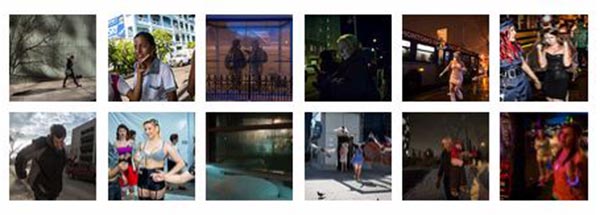
OBSERVE
A lot of photographers feel that anything longer than 50mm equiv, or even 35mm, is “against the rules” for street photography. How do any of you feel about that David? You sometimes use the Olympus 45mm f1.8 (90mm equivalent).
DH
I think many “rules” of street photography are pretty ridiculous. I try not to pay a lot of attention to the rules. I believe all that really matters is the success of the shot. Yes, there is an energy and authenticity that comes from a wider lens that is very appropriate for the street—there’s good reason most of us use them most of the time. But limiting yourself to that perspective exclusively is a bit short-sighted (sorry, couldn’t help myself). A lot of magic can happen when compressing images. It can be a very painterly way of seeing, especially with a large aperture. You paint with colors and shapes rather than objects or subjects. It’s a slower, more studied way of seeing. Saul Leiter is a perfect example of this. It all depends on the mood you’re trying to achieve, the story you’re trying to tell.
OBSERVE
You shoot with a Fuji x100, Hector. Am I correct in understanding this is your first camera? You don’t have previous experience with film? The x100 is a popular camera with street photographers. You mentioned that it took awhile for you to feel comfortable with it. I have heard other reports that there was a steep learning curve with this camera. How does the hybrid viewfinder help or limit your shooting style? Is a fixed focal length limiting… do you ever wish it was a little wider, or longer?
Hector Issac (HI)
You are correct, Greg, I had no previous experience with film or any other medium and the Fujifilm x100 was my first camera. Recently, I was asked by a friend… Why that camera? I didn’t have an answer. I still don’t, but I’m glad I got it.
For most of those coming with a broader photographic background, the x100 was a struggle, for me it was a love/hate situation that still exists. After my first try, I almost sold it, then it was left on the shelf for one or two months. It took me about another three to four months to get comfortable enough to get what I wanted. The main issue back then (cough cough) was the autofocus, well … it sucked, so I decided to learn to work manually and zone focus, rather than sell the camera and buy another… Best decision I ever made.
I’m a bit obsessive when I’m interesting in learning something, so my learning curve was rather steep given the amount of time I spent to learn my camera and about photography in general. The hybrid viewfinder helped me learn the camera’s frame lines, even if the lag was a problem.
OBSERVE
Thanks Hector. I have heard from others that the x100 has a steep learning curve. But those who master it love it to the point of becoming evangelists. Interesting choice as a first camera but it seems that diving in on the deep end and making the commitment has served you well!
There are many ways a photographer’s equipment choices shape the pictures they produce. Even though the street photography genre has been slow to embrace anything other than straight, unmanipulated images, today we have so many more choices in equipment and post processing than we did on the pre-digital era. While it should be easy to create a signature look, remarkably much of today’s street photography is fairly homogenous.
Views: 325
![]()


















![sunny1_thumb[1]](https://leicaphilia.com/wp-content/uploads/2015/01/sunny1_thumb1.jpg)

























